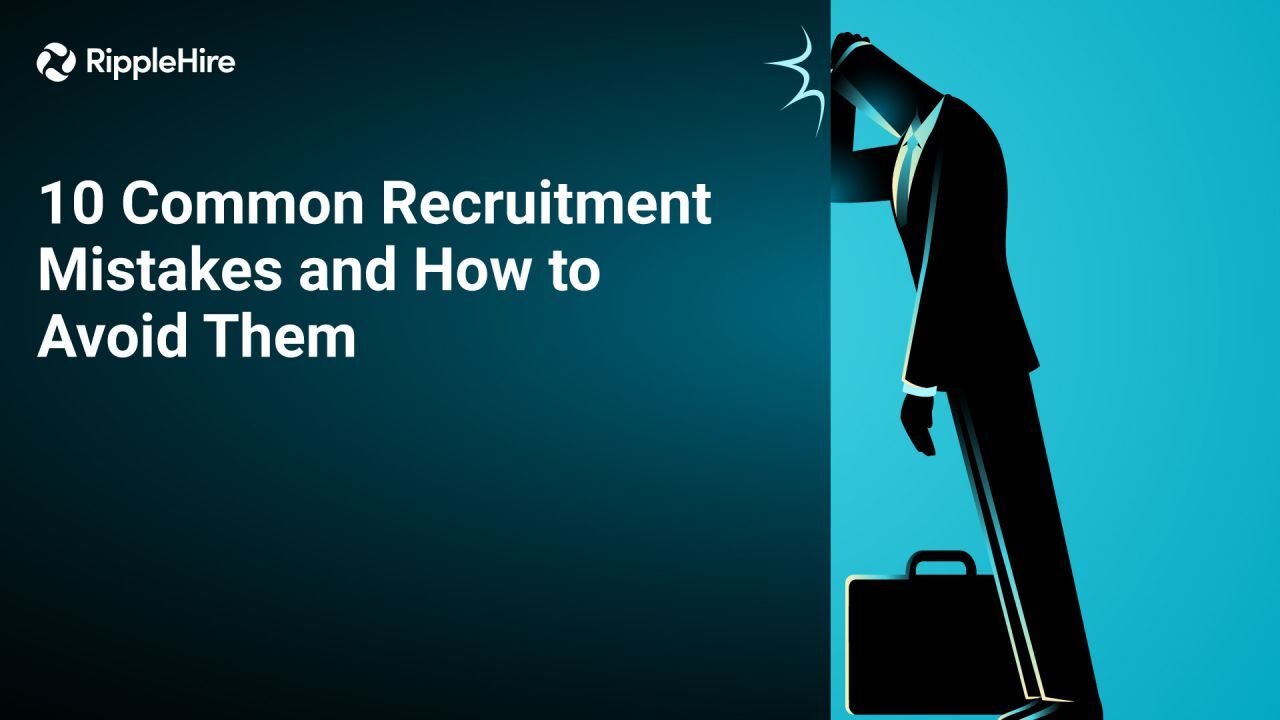10 Common Recruitment Mistakes and How to Avoid Them
When was the last time a candidate you hired abruptly left or had to be let go? Probably not too long ago. And if it happened, you likely faced tough questions from leadership, or at the very least, some internal embarrassment.
According to the US Bureau of Labor Statistics, over 13 million workers quit their jobs in Q1 2024—nearly 3 percent of the workforce each month. In today’s market, where skilled candidates have the upper hand, making the wrong hire can be costly. In fact, a bad hire can cost your company up to 30 percent of the employee’s first-year salary.
Worse, the cost is not just financial. There is the time spent monitoring underperformance, correcting behavior, and managing disengagement. It is no wonder recruiters and hiring managers feel burned out.
If you want to reduce bad hires and increase retention, here are the ten most common recruitment mistakes—and how to avoid them.
1. Posting Unclear Job Descriptions
A vague job description misleads the candidate before the first interaction even begins. If the candidate expects one type of role and lands into something else, dissatisfaction is inevitable.
Be specific. Mention the key responsibilities, required skills, team structure, and reporting lines. Make it scannable but substantial enough for qualified applicants to self-assess before applying.
2. Ignoring Internal Talent
Many recruiters immediately look outside the company when a position opens up. But internal hiring is often faster, more cost-effective, and less risky.
If a high-performing employee is ready for the next challenge, consider them. A clear internal mobility policy, supported by your ATS, can make internal applications seamless and equitable.
3. Over-Relying on Resumes
A polished CV does not always translate into a capable employee. Conversely, some of your best hires may have unconventional resumes.
Treat the resume as a filter, not a decision-maker. Use structured interviews, assessments, and reference checks to evaluate core competencies and cultural alignment.
4. Asking Generic Interview Questions
Candidates today are trained to answer clichés like “What is your greatest weakness?” with rehearsed responses. Instead, ask questions specific to their experience and role.
Dig deeper. Challenge them to explain decisions made in previous roles. Understand not just what they did, but why they did it.
5. Trusting Gut Over Process
Your instincts might draw you to a particular candidate, but hiring is not intuition-based. It is decision-making based on evidence.
Create scorecards. Use structured evaluations. Align panelists on key criteria. Trust the data, not just your gut.
6. Avoiding Overqualified Candidates
It is tempting to assume that overqualified applicants will leave soon or get bored. But in a tight market, they may simply be looking for stability, or a meaningful role after a career pivot.
Do not disqualify them prematurely. If they are aligned on expectations and show commitment, they may become your most dependable team members.
7. Offering Below-Market Compensation
If someone accepts a low offer out of desperation, they are unlikely to stay. And even if they do, you may not get their best work.
Use compensation benchmarks to stay competitive. If you cannot match market rates, make up for it with career growth, culture, or flexibility.
8. Over-Emphasizing Culture Fit
Culture fit matters—but it can become a hiring bottleneck. In a remote-first world, interpersonal dynamics have evolved. Collaboration happens online. Teams are more outcome-driven.
Focus on alignment with values and communication style, not personal likability. Diversity of thought often drives better performance.
9. Overselling the Role
It is natural to want to impress candidates. But if you exaggerate growth potential or workplace perks, you are setting yourself up for churn.
Be transparent. Candidates do not expect perfection. They expect honesty. Set expectations about team structure, progression timelines, and leadership style.
10. Skipping Induction and Expectation-Setting
Once the offer is rolled out, the real work begins. Without a solid induction process, your new hire may flounder within weeks.
Set clear expectations from day one. Walk them through values, policies, reporting lines, and communication norms. This reduces confusion, accelerates productivity, and lowers the risk of early attrition.
Final Thoughts
There is no such thing as a perfect hiring process. But when you avoid these common recruitment mistakes, you dramatically improve your chances of making high-impact hires.
The key lies in structure, transparency, and the right tools. If your current system feels like a patchwork of spreadsheets, emails, and follow-up chaos, it is time to upgrade.
RippleHire is the high-performance ATS built to help enterprises reduce time-to-fill, improve candidate experience, and make smarter hiring decisions. From internal mobility to referral programs, structured interviewing to offer rollouts, RippleHire brings everything together in one place.
Want to avoid costly hiring mistakes? Schedule a demo and see how RippleHire can streamline your hiring journey.
Frequently Asked Questions
1. What is the most common mistake recruiters make?
Posting vague or misleading job descriptions is one of the most common hiring mistakes. It leads to mismatched expectations and short-lived hires.
2. How can I reduce bad hires in my company?
Use structured interviews, clarify job roles early, avoid overpromising, and equip your team with an advanced ATS like RippleHire to streamline hiring workflows.
3. Should I hire overqualified candidates?
Yes, if they align with your expectations and show genuine interest in the role. Overqualified professionals can bring depth, experience, and stability.
4. What is the impact of hiring the wrong candidate?
A bad hire can cost up to 30 percent of the candidate’s annual salary. It also impacts team morale, productivity, and employer brand.
5. How important is onboarding in retention?
Very. A well-structured onboarding process builds clarity, sets the tone for success, and helps new hires become productive faster.















